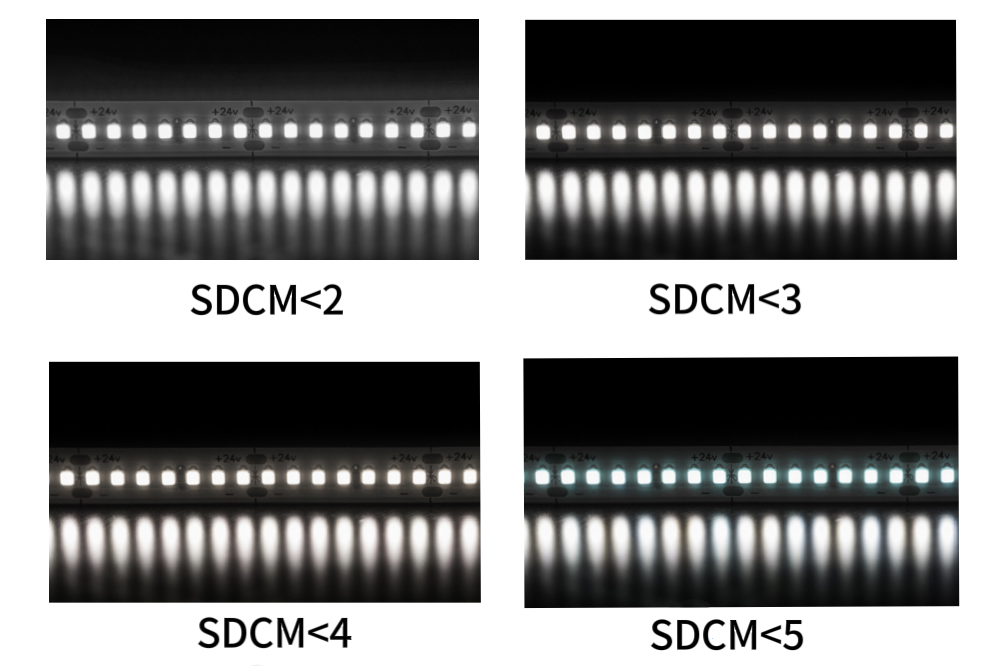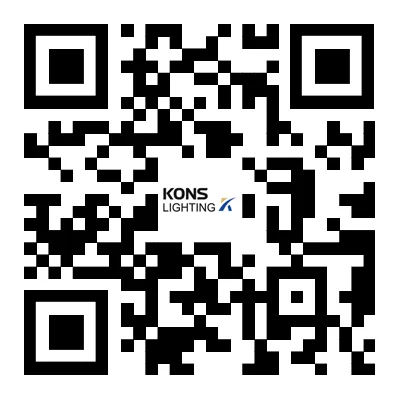- English
- Español
- Português
- русский
- Français
- 日本語
- Deutsch
- tiếng Việt
- Italiano
- Nederlands
- ภาษาไทย
- Polski
- 한국어
- Svenska
- magyar
- Malay
- বাংলা ভাষার
- Dansk
- Suomi
- हिन्दी
- Pilipino
- Türkçe
- Gaeilge
- العربية
- Indonesia
- Norsk
- تمل
- český
- ελληνικά
- український
- Javanese
- فارسی
- தமிழ்
- తెలుగు
- नेपाली
- Burmese
- български
- ລາວ
- Latine
- Қазақша
- Euskal
- Azərbaycan
- Slovenský jazyk
- Македонски
- Lietuvos
- Eesti Keel
- Română
- Slovenski
- मराठी
- Srpski језик
Application and Equipment
Kons Lighting System
Light is crucial for human perception, but its importance is difficult to measure and compare in daily life. Kons Lighting transforms complex lighting technologies into products that are easy to understand and operate, making it unique in the market. Kons Lighting focuses on users and produces lighting tools with stable quality, compatibility, and comparability. This simple lighting system is applied to our various products, bringing real added value to our partners.
Stable lighting quality
Kons Lighting uses the same type of LED chips in all products. LED chips are updated in annual product releases. Kons Lighting strictly regulates each component to ensure stable lighting quality in terms of color rendering, color temperature, color trajectory, and luminous flux. Kons Lighting provides neutral white light (4000K) or warm white light (3000K) LED chips, allowing designers to create subtle contrasts in a given space and highlight the texture characteristics of materials.
The selection of light distribution for Kons Lighting
Lighting design schemes are as diverse as architecture, exhibitions, and even brands. To meet people's different needs for lighting, Kons Lighting is based on an easy to understand system and has introduced lens systems with different light distribution characteristics that are oriented towards specific applications. This includes a wide range of beam characteristics, such as the entire range from narrow spotlight to floodlight, from elliptical floodlight to lens spotlight wall mounted lighting. These beam characteristics can create efficient ambient lighting, uniform wall lighting, or directional accent lighting.
Product Design
The linear lighting design of Kons Lighting can blend classic and modern architectural styles. All product lines are based on simple geometric shapes and can be combined with each other in different sizes. Kons Lighting provides a wide range of linear lighting tools, allowing designers to flexibly execute projects of any scale and complexity. To make the application more diversified, the internal design team of Kons Lighting has also developed a unique functional design language that can reflect the requirements of LED technology for lighting from the perspective of visual width.
Using new lighting technologies
By adopting the new LED lighting technology, a softer and more comfortable lighting effect can be achieved, while also improving the energy efficiency and lifespan of the light strip. In addition, it is also possible to explore light strips with special lighting effects, such as dynamic lighting, gradient lighting, etc.
Adopting intelligent control technology
By adding an intelligent control module, remote control, timing switch, color temperature adjustment and other functions of the light strip can be achieved. Users can control the LED strip through a mobile app or smart speaker, making it more intelligent and convenient.



Colorful lights
The COLORS spectroscopic standard uses the CIE (XY) spectroscopic program
Using the CIE (X, Y) spectral program, the BIN area is subdivided according to the same color temperature to ensure that customers use the same BIN for the same order, in compliance with international ANSI labeling settings.

Thousands of colors
Warm toned lighting typically presents yellow, orange, or red tones, giving people a feeling of warmth, comfort, and closeness. This color tone is commonly used in homes, restaurants, and leisure places to create a warm and relaxing atmosphere.Cold toned lighting tends towards blue, green, or purple, giving people a refreshing, calm, and modern feeling. This color tone is suitable for offices, commercial spaces, or places that require increased focus, as it helps to enhance alertness and work efficiency.
Mid tone lighting falls between warm and cool colors, typically presenting as neutral white that is neither too warm nor too cold. This color tone is very versatile and suitable for various environments and applications, providing a uniform and neutral lighting effect.
You can choose any LED light source besides regular colors, color temperature, and BIN Color, wavelength, color temperature, and BIN coordinates can all be customized.


CRI
Definition: CRI is an indicator that quantifies the ability of a light source to reproduce the color and appearance of an object. It is based on comparison with an ideal or reference light source (usually a black radiator or daylight). The CRI range is from 0 to 100, where 100 represents the perfect restoration of the object's appearance Color and appearance.
Importance: In lighting design, selecting light sources with high CRI is crucial to ensure accurate presentation of object color and appearance, especially in applications that require true color perception, such as commercial spaces, residential and office environments.
Kons Lighting belt color rendering index can achieve CRI98.
High color rendering index light highly restores the color and appearance of objects.

SDCM
Displaying the true color of an object: In terms of color display, color tolerance is crucial for reproducing the true color of an object. Due to the possible color deviation of different objects when reflecting light, adjusting the color tolerance can minimize this deviation as much as possible, allowing the audience to more accurately perceive the true color of the object.
Handling of dynamic range: Color tolerance can also help handle dynamic range. In photography and video production, in order to ensure the overall stability and color reproduction of the image, it is usually necessary to adjust the light intensity to a certain extent. By adjusting the color tolerance, the processing of dynamic range can be improved to a certain extent, making the picture more rich and realistic.
Enhance visual effects: Color tolerance can also enhance visual effects to make the work more attractive. For example, in commercial design, reasonable color tolerances can make products more aesthetically pleasing and increase buyers' willingness to purchase.
SDCM<2, no visual differences in the same batch of products.

Kons Lighting LED strip can achieve RA>97 (average color rendering index)
RA definition: RA is the average color rendering index of a light source on eight standard color samples. These samples include colors of various saturation and hue levels. RA provides a simplified method to describe the color rendering performance of light sources, although it is not as detailed as a complete CRI evaluation.
Importance of RA: RA is a commonly used parameter in lighting design as it provides a quick way to understand the color rendering performance of light sources. However, for applications that require precise color rendering, a complete CRI evaluation or more advanced TM-30 method should be used.
Use Ra evaluation index to estimate the color rendering index of lighting products and compare the degree of reflection of natural colors in traditional lighting products.

Soft lighting
Provide soft lighting for delicate items
The LED spectrum emits almost no radiation in the infrared and ultraviolet regions, which may damage or fade sensitive products, while traditional halogen lamps and HID lamps contain strong radiation in the infrared and ultraviolet regions.
This means that in addition to excellent lighting quality, Kons Lighting also meets all requirements, providing soft lighting without the need for additional filters.

High luminous efficiency
Energy conservation and environmental protection, corresponding to the national low-carbon call.
Definition: Luminous efficiency is the ratio between the luminous flux emitted by a light source and the electrical power consumed, expressed in lumens per watt (lm/W). It measures the efficiency of a light source in converting electrical energy into visible light.
Importance: In lighting design, choosing high-efficiency light sources can help reduce energy consumption and operating costs, while minimizing the impact on the environment. High luminous efficiency is also one of the key factors in achieving green building and sustainable development goals.
Kons Lighting uses high-efficiency LEDs and optical components up to 174 Im/W. Including system drivers to improve lighting efficiency. We use LEDs and drivers to ensure a long lifespan, exceeding 60000 hours, while retaining over 80% of the luminous flux.

Multiple color temperatures available for customization
Color temperature is a parameter that describes the color of a light source, usually expressed in Kelvin (K).

Suitable for various intelligent systems
We are well aware of the convenience needs of modern life, so we adapt various intelligent control systems for LED light strips.

0-10V dimming
Principle: 0-10V is an analog control method that controls the brightness of lighting equipment by changing the magnitude of the voltage signal. Among them, 0V represents the off state, and 10V represents the maximum brightness.
High flexibility, enabling precise control of lighting equipment to meet lighting needs in different scenarios.
DALI dimming
Principle: DALI is a digital control method that controls the brightness and color temperature parameters of each lighting fixture through digital signals. Each lighting fixture has an independent address that allows for individual control.
'Addressable', with high flexibility, can achieve precise lighting adjustment and control.
Thyristor dimming
Principle: It is a technology that can directly adjust the output of 220V mains voltage. Currently, most LED dimming in China is achieved through this method. The principle is that when the lamp needs to be dimmed through a thyristor signal, the input voltage waveform in the circuit deviates from the sine wave due to changes in the thyristor conduction angle, which changes the effective value of the input voltage to achieve the purpose of dimming.
DMX512 dimming
Principle: DMX512 is a digital dimming protocol that controls lighting effects by transmitting signals through a data bus. It can digitally control dimmers and other control equipment in places such as stages, theaters, and studios.
It can achieve precise positioning, step adjustment, scene preset and other functions, and has the advantages of adopting a multi-point bus structure for interconnection, without the problem of information path blockage.
Art Net Dimming Protocol
Principle: Art Net uses UDP protocol for control, and sends control commands directly to the device's IP address. It supports up to 256 channel control and can be used to control stage lighting, LED strips, mixing consoles, smoke machines, and sound systems
Integrate various devices.
It has the advantages of network adaptation and security authentication, and can automatically adapt and allocate IP addresses according to the network environment. At the same time, it can verify the identity of the controller through passwords or other credentials, and restrict illegal access and operations.
Application area

Each space needs its own unique lighting scheme to provide lighting support for users. And bring an icing on the cake effect to the architecture and interior. Kons Lighting combines its accumulated experience in architectural lighting and display lighting design in different fields of architecture with the most advanced LED technology available today.


Lighting Case







